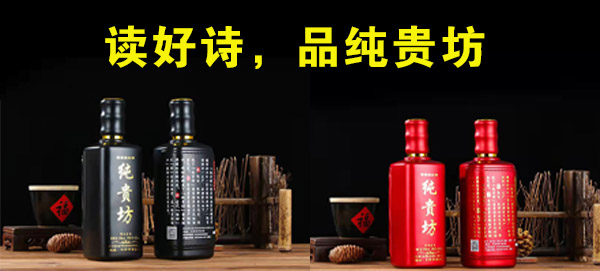导读:原诗为中国古诗最常见的七律,一、二、四行押韵,译文采用了英诗最常见的五步抑扬格。

主持人
王如利(Wang Ruli)
丁立群(Ding Liqun)
Introduction
霜降是秋季的最后一个节气,有天气渐冷、初霜出现之意。在第12期的《华章英韵》中我们欣赏了诗人刘禹锡“我言秋日胜春朝”的豪情,这期的译者选择的还是刘禹锡的作品,他的这首《霜降》是否也会给读者别样之感呢?本期有幸邀请到王琳女士执笔主译,同时王女士还为本诗英译提供了精美的书法,一起欣赏!
Frost’s Descent is the last solar term of autumn in Chinese lunar calendar, which means the weather becomes colder and the first frost appears. In the 12th issue of Chinese Verse in English Rhyme, we appreciate the poet Liu Yuxi’s “Autumn’s far better than early spring I’d say”. This issue’s poem is still selected from his works. Will his “First Frost” also leave readers a different feeling? We are delighted to have invited Ms. Wang Lin for this issue’s translation, and she has also provided us a beautiful transcription in calligraphy. Please enjoy it!

蔡铁勇书法
晚枫朗诵
霜降
(唐)刘禹锡
山明水净夜来霜,
数树深红出浅黄。
试上高楼清入骨,
岂如春色嗾人狂。

First Frost*
Liu Yuxi (Tang Dynasty)
Translated by Wang Lin
Mountains and waters clear, frost comes with night
Trees tinged with yellow, crimson but a few
Though brisk chill hits my bones up on tower height
No flighty fervor like spring would incite
* First Frost is the 18th solar term in Chinese calendar, which marks the occurrence of frost.
The Translator's Remarks
这是唐代诗人刘禹锡的两首秋词中的一首,时任职朗州司马(湖南常德),相当于现代的顾问,是诗人被贬后的虚职。刘禹锡当时只有34岁,借诗表达自己的志向。
原诗为中国古诗最常见的七律,一、二、四行押韵,译文采用了英诗最常见的五步抑扬格。不同于很多古诗,本诗没有非常特别的文化意象,清明的山水,多彩的秋色和日渐清冽的夜晚,皆以朴实的语言呈现,最后一行总结升华,道出作者的内心感受:春天的张扬激起诸多不安。诗中的霜降和寒夜对应题目和所描写的季节,也隐喻了变故所带来的成熟和沉静。
在翻译本诗的过程中,遇到两个难点。其一是第二行的颜色,其二是第三行“入骨”的英文措辞。原诗中的“深红”和“浅黄”用来象征秋色,结构音节都对称, 但是直译成英文“deep red”和“light yellow”就缺失了对称。诗人采用了中性的色彩词汇,以达到简洁,但是英文如此表达就减弱了诗意,并且考虑到句子里的其它内容,使用的音节也嫌过多,所以在译文中采用了“tinged yellow”和 “crimson”。
对于第二个难题“入骨”的翻译,这个词意为 “getting into or penetrating the bones”, 但是“入骨”前面的词为清,意指清冽,限制了浸入或穿透的力度及程度,所以采用程度稍弱的“hit”来表示。
在此值得一提的是颜色。很多颜色皆以生活中的事物命名,因意象的相关性, 是诗歌中非常巧妙的表现手法。比如:柠檬、香蕉实为更加生动准确的浅黄;而樱桃、葡萄酒、血液都可归为深红, 同时也更加形象。对一个诗人而言,颜色名字的选择即是意象的选择,除非他像《霜降》的作者刘禹锡一样,不愿赋予任何感情色彩。
This is one of the two poems written about autumn by poet Liu Yuxi of the Tang Dynasty. He was at the time serving as Langzhou Sima---a quasi administrative councilor in modern nomenclature, in a town in Hunan Province. This bureaucratic post, the result of a demotion, carried no effectual power. Liu was only 34 and was expressing his inner spiritual strength through verses.
The poem is written in typical 7-word 4-line meters, ending the 1st, 2nd, and 4th lines with same rhyme; and, following the conventions of translating classic Chinese poems, the translation is rendered in iambic pentameter. Unlike many classic Chinese poems, this poem has no distinctive cultural images embedded. The descriptions of limpid waters and mountains, the colors of autumn and the increasingly cooler nights are all self-explanatory; and the last line epitomizes the scenery in a twist of sentiment that proclaims, by comparison to autumn, spring incites much restlessness. The mellowing and calming figured by frost and cool nights are fitting to the title and season, implying the poet’s maturing outlook of life brought by his current predicament.
In the process of translating this poem, two phrases presented difficulties: the colors in the 2nd line and the translation of “入骨” in the 3rd. “深红” and “浅黄” are used to symbolize colors of autumn, which in Chinese are perfectly parallel in syntax and syllables; but the literal English translation “deep red” and “light yellow” are not so. The poet used two rather neutral terms for the colors in order to keep the lines simple and concise; however, if the literal English translation were used, not only the poetic sense is weakened, they would also take too many syllables, considering the rest of the content in the line. Instead, “tinged yellow” for “浅黄” and “crimson” for “深红” are used.
For the second difficulty, “入骨” means getting into or penetrating the bones, but the word preceding it “清”, meaning mild chill, restricts the force and degree of getting into or penetrating. Hence, “hit” is used here instead of a much more forceful action word.
An additional note on colors may be worth mentioning here. Since many colors are named after real life objects, they are wonderful devices in poetry for the immediate associations between the images and specific sentiments. For example, “lemon” and “banana” are much more poignant and vivid terms for “bright yellow”; likewise, “cherry”, “wine” and “blood” all come under the general term of “deep red”, which are much more visual. For a poet, choosing the term means to choose the image to be evoked lest he wishes not to implicate the situation with any specific sentiment, as in Liu’s First Frost.
The Translator

王琳在北京长大,中学毕业后移民美国, 麻省州立大学经济学士。曾在加拿大政府部门担任翻译,其后在深圳一所私立学校任教12年。
Wang Lin grew up in Beijing and immigrated to the United States after completing high school. She received a BA in Economics from University of Massachusetts in Amherst and has worked as an interpreter for Government of Canada, and taught for 12 years at a private school in Shenzhen, China.
《中诗翻译》编委会
主办:中诗网
协办:译诗群、肇庆市翻译协会、安徽工程大学外国语学院、北理工珠海学院外国语学院
总策划:周占林、冬箫、宛城卧龙(执行)
顾问组:何功杰教授、海外逸士、李正栓教授、张智中教授、黑马(毕冰宾)、柏敬泽教授、吴伟雄教授、 赵宜忠老师、黄焰结教授、杨中仁教授、张琼副教授
编辑组:宛城卧龙、颜海峰、金沙文字、杨中仁、冉瑞侠、王如利、丁立群、晚枫、王琳、张晔、赵佼、岩子、陈赛花、馨阅、余新


 京公网安备 11010502045403号
京公网安备 11010502045403号